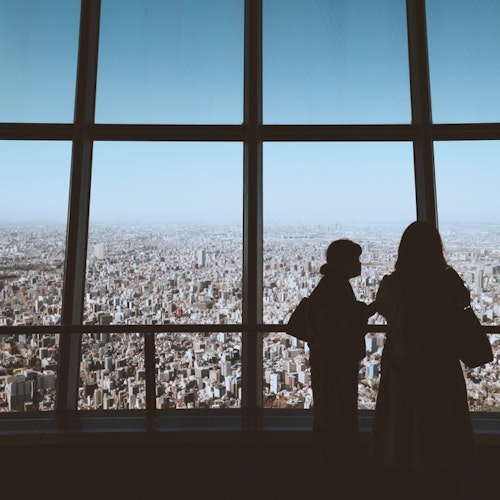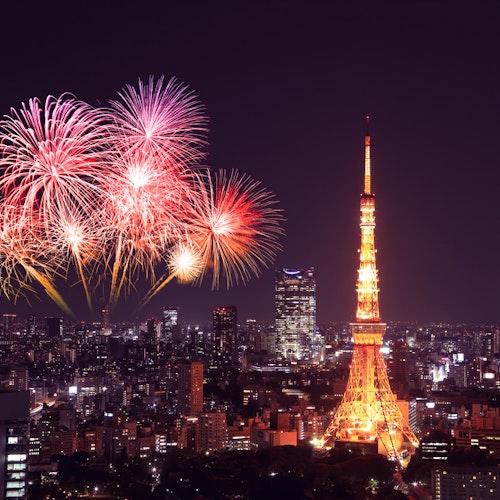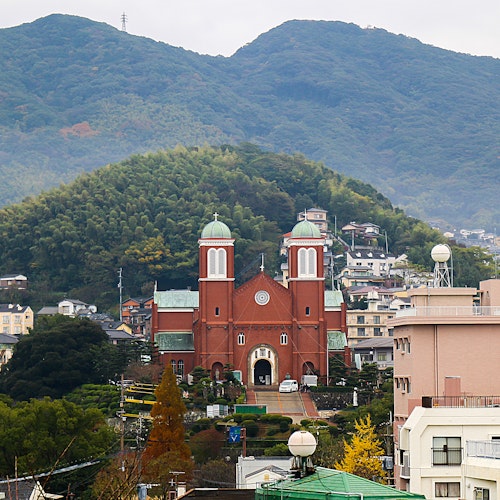
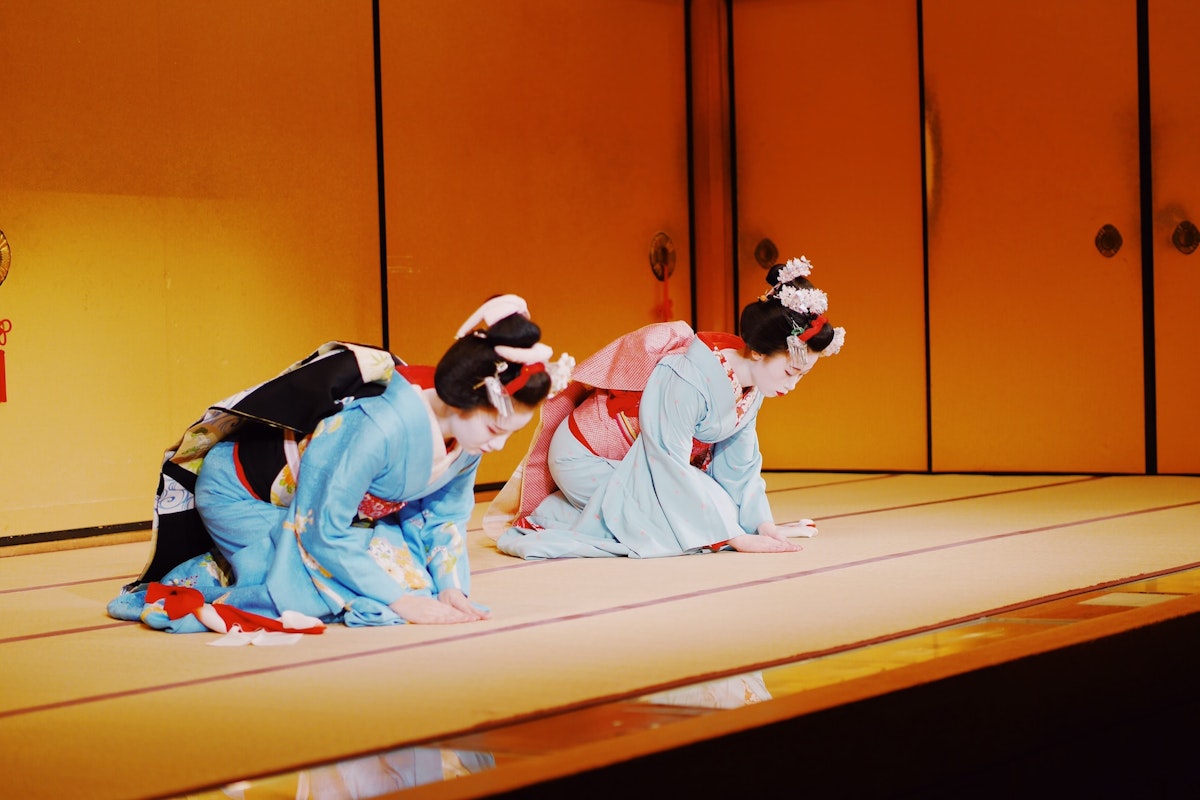
As evening falls in Kyoto, the city takes on a new charm. The busy streets quiet down, and the Gion district, known for its traditional wooden houses and lantern-lit paths, comes to life in a different way. Here, we step into the world of the Geisha—a world of beauty, tradition, and artistry that has lasted for centuries.
Geisha are more than just elegant performers. They are skilled artists trained in dance, music, conversation, and traditional Japanese customs. Often misunderstood outside Japan, they play a key role in preserving the country’s cultural heritage. In this guide, we’ll explore the history, lifestyle, and significance of Geisha, focusing on those in Kyoto’s Gion district. This historic area, with its charming teahouses and timeless atmosphere, remains the heart of Geisha culture. Join us on a journey to discover the magic and traditions of these fascinating entertainers.
The world of a Geisha is one where tradition, artistry, and grace merge into a distinctive cultural symphony. They are not merely performers, but curators of time-honored arts, trained from a young age in a multitude of disciplines. The music of the shamisen, a three-stringed instrument, is a common refrain in a Geisha's performance. They learn classical dances that tell tales of Japan's past and present, infusing each move with a subtlety and nuance that only years of dedicated practice can achieve. But their skill set extends beyond dance and music.
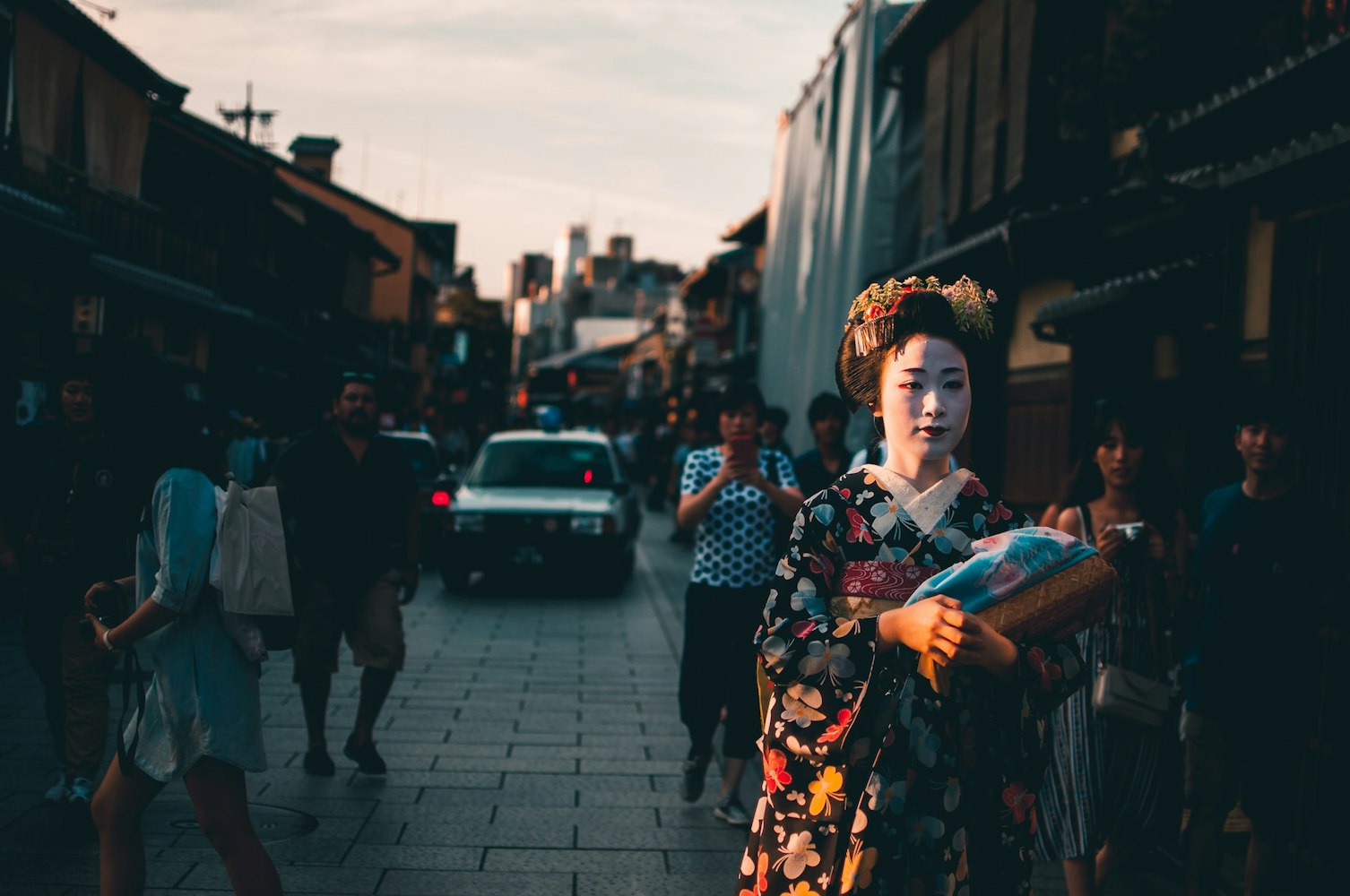
Their conversation skills are honed to engage, entertain, and hold the attention of their guests. Their role in social settings is often to facilitate dialogue, inject humor, and create a relaxed atmosphere. Traditional games, refined etiquette, and the ability to host a tea ceremony also form part of their extensive repertoire. Each element of their training is aimed at perfecting the art of entertainment, transforming them into versatile artists who not only perform but captivate.
The concept of the Geisha has often been misrepresented in Western culture, clouded by misinterpretations and misplaced parallels. A common misconception is to view Geisha as courtesans, a notion far removed from the reality of their profession. This stereotype was largely propagated by the interactions during the World War II era, resulting in a distorted understanding of the Geisha's role in society.
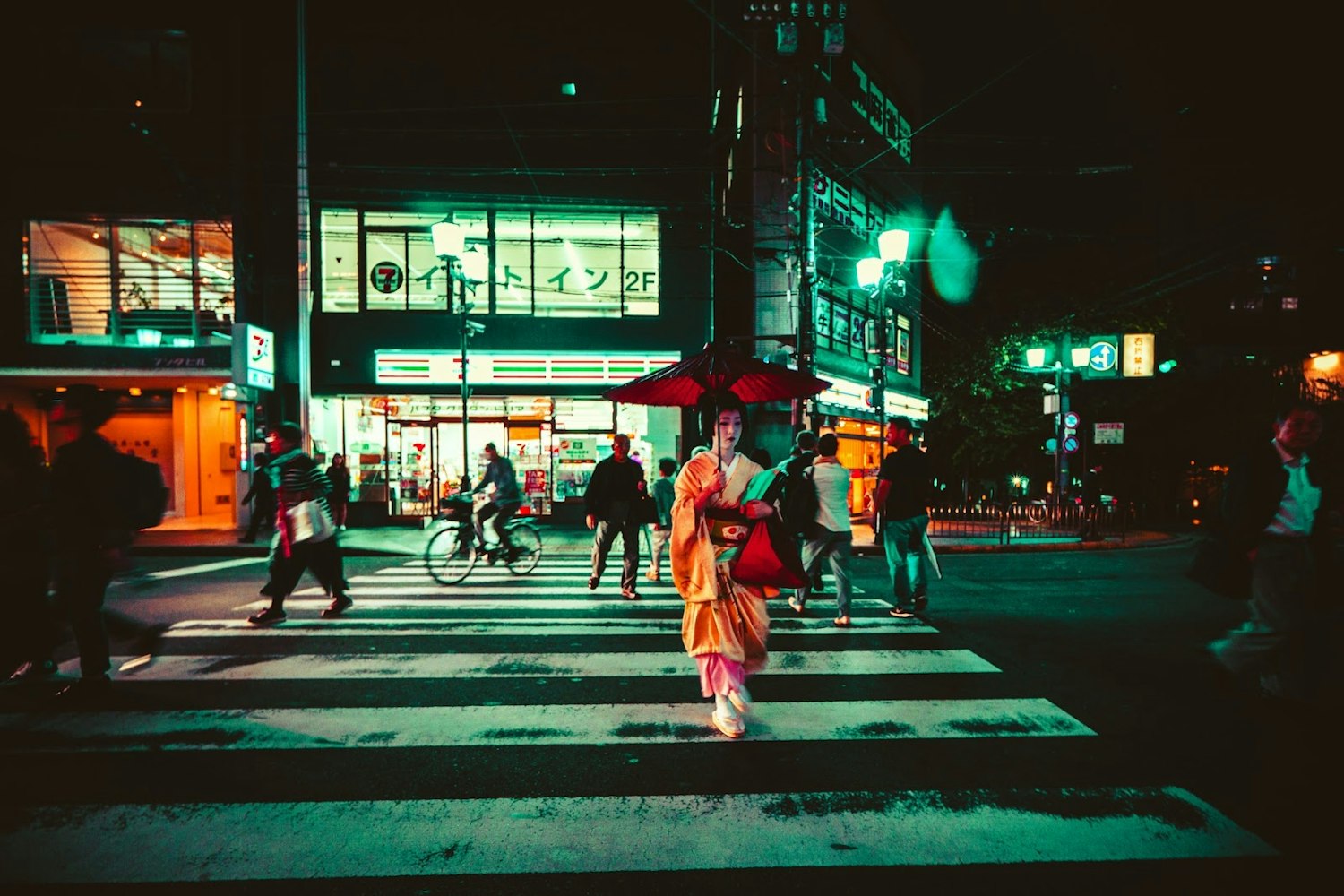
In reality, the word 'Geisha' translates to 'person of the arts', and their profession is rooted in entertainment and artistry, not in the world of adult companionship. They are revered members of society, embodying the elegance and sophistication of traditional Japanese culture. Their presence at a gathering is a mark of prestige, their performances a highlight of the evening. A Geisha's role, therefore, is not to sell their bodies, but to sell their art and their ability to create an atmosphere of refined enjoyment. Understanding this is crucial to appreciating the true essence of Geisha culture, free from the Western misinterpretations that have long clouded their image.
Nestled on the eastern bank of the Kamo River, the Gion district stands as a beautifully preserved piece of Kyoto's history. Meandering through the district's narrow, cobblestone alleys takes you back to an era where traditional wooden machiya merchant houses, with their characteristic lattice fronts, lined the streets. These houses, many of which are now converted into restaurants, shops, or ochaya (teahouses), add a unique architectural charm to Gion.
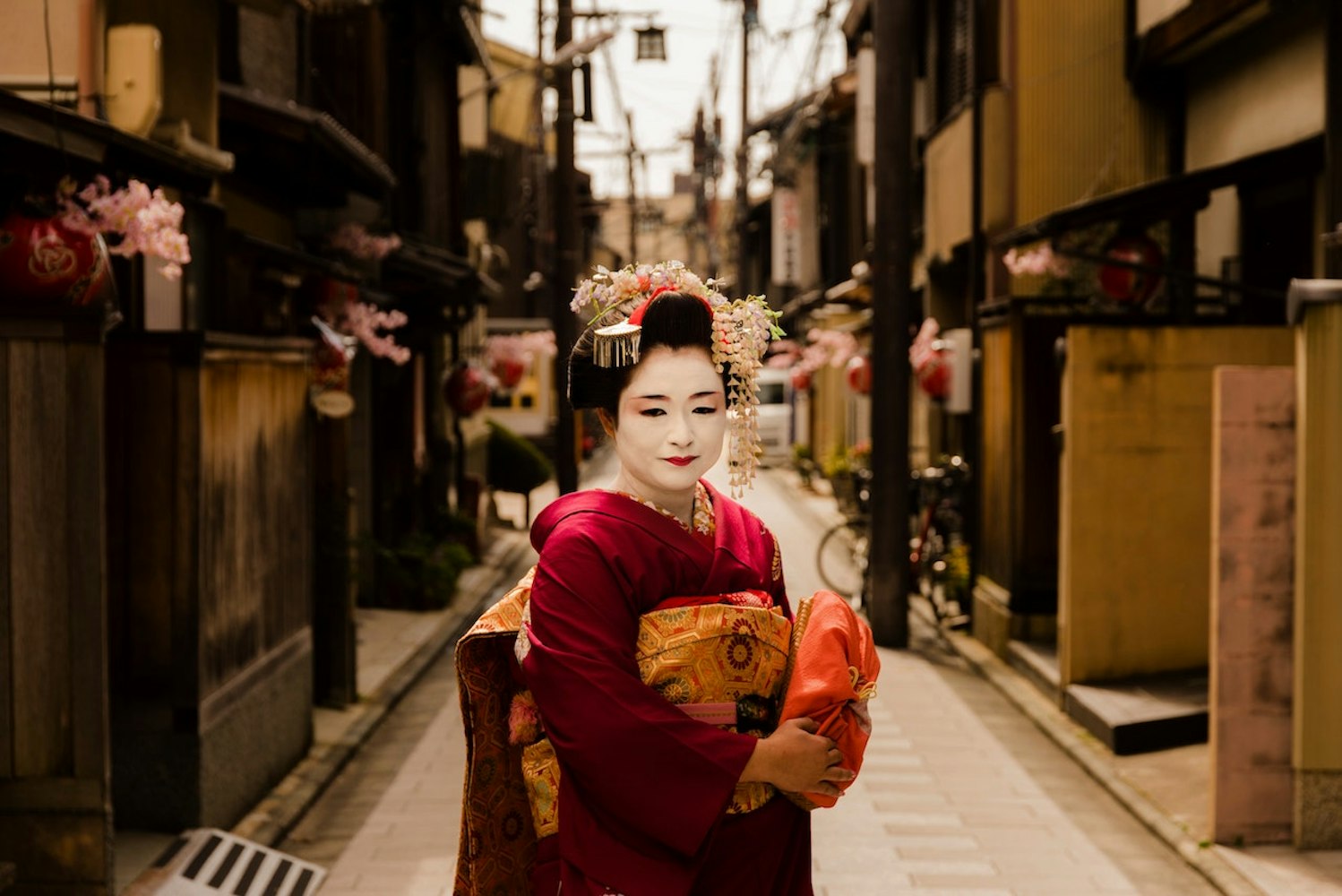
As you wander further, the enchanting sight of Gion's willow-lined Shirakawa canal, coupled with the old-world elegance of Tatsumi bridge, only amplifies the district's historic charm. Lanterns glow softly from traditional buildings, painting a picture of tranquil nostalgia. This visual delight of old Kyoto serves as the perfect backdrop to the geisha culture that thrives in its heart, blending seamlessly into the rich tapestry of Gion's traditional architecture.
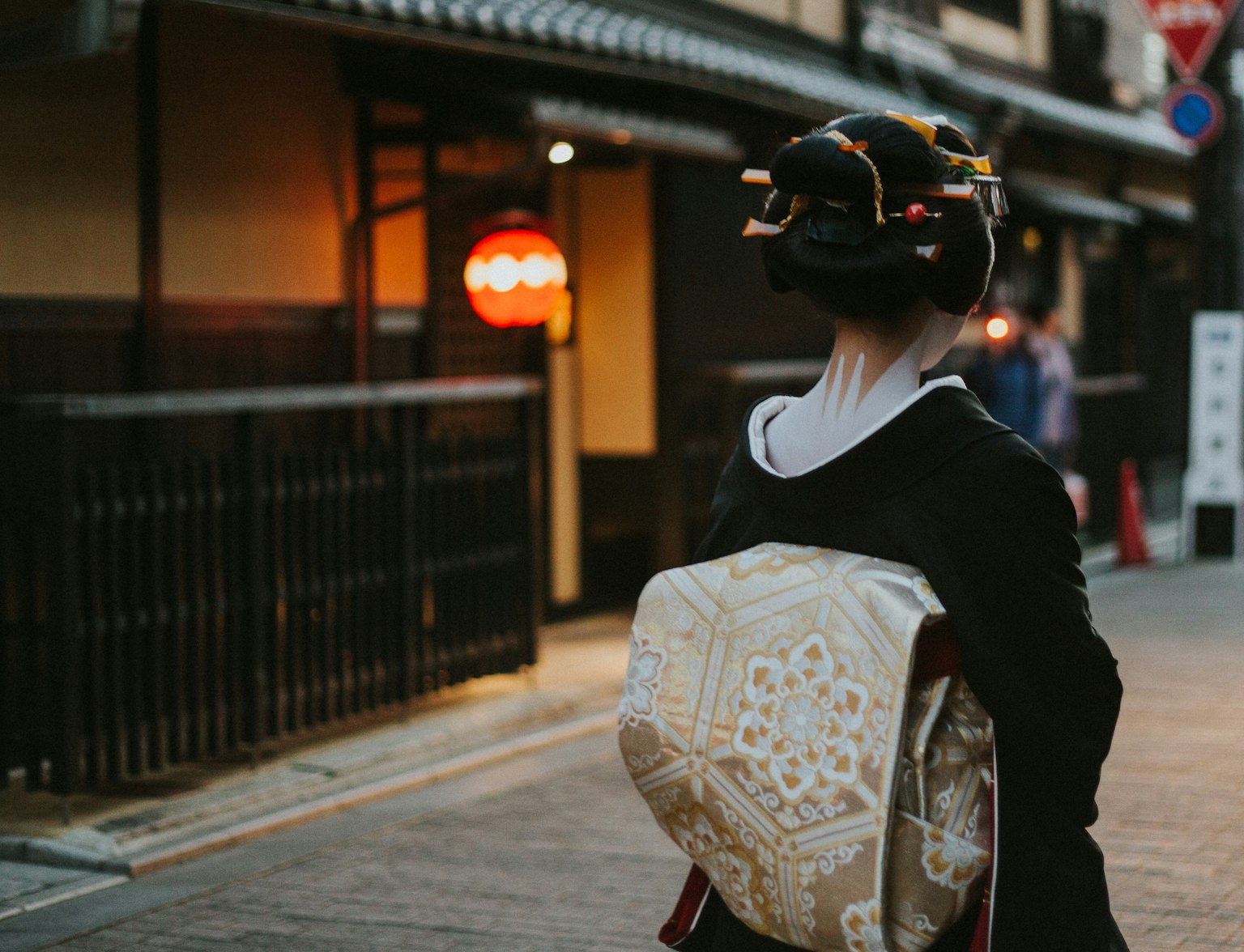
Explore the charming Gion district and with some luck, spot a geisha.
Gion, once known as the licensed pleasure district of Kyoto during the Edo period, has since evolved to become the epicenter of geisha culture. Its teahouses and hanamachi (geisha districts) have played host to geisha and maiko for centuries, serving as the hub for their performances, ceremonies, and gatherings.
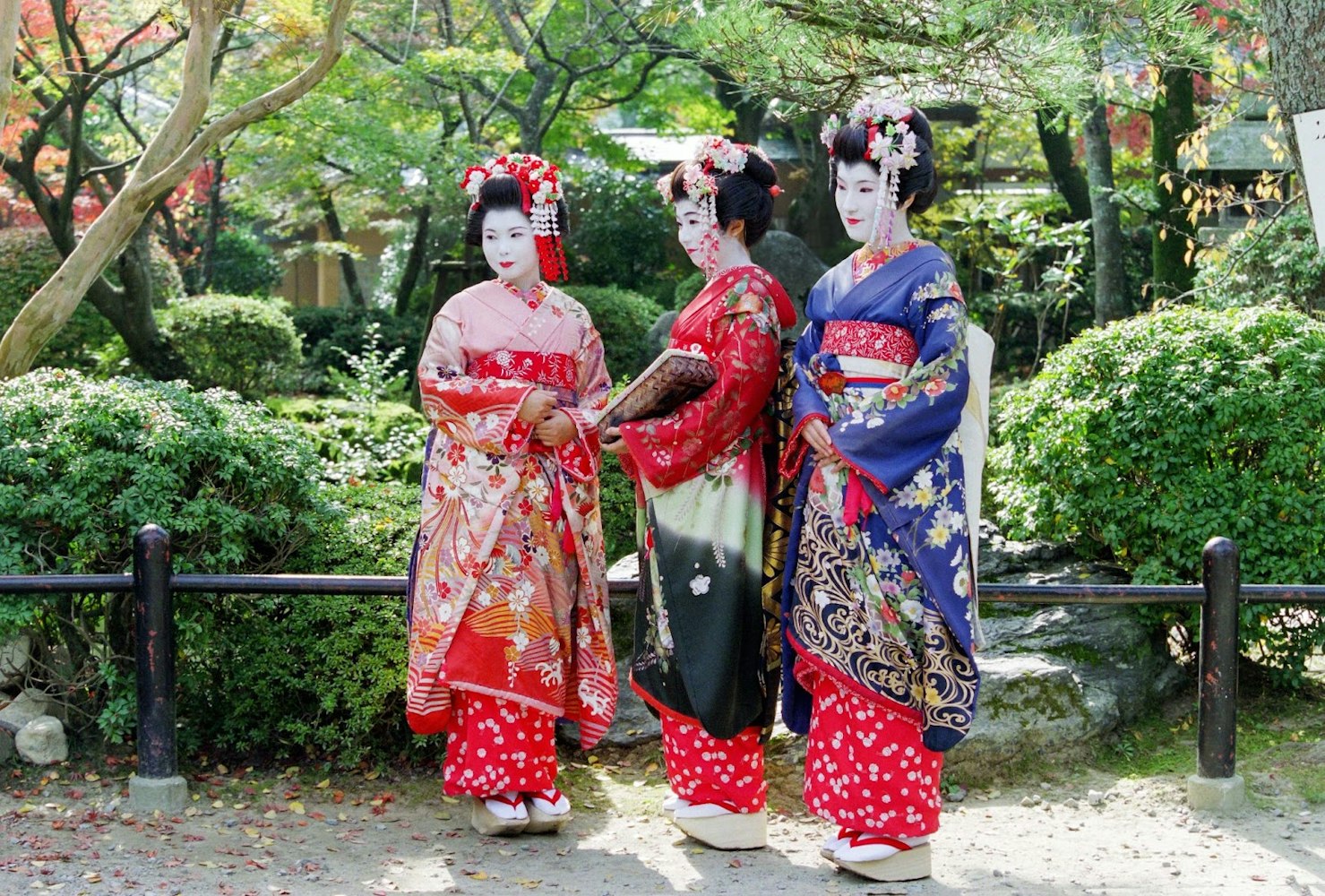
Today, a visit to Gion is incomplete without catching a glimpse of a geisha or maiko, elegantly attired, as they gracefully make their way to work in the early evening. The district also holds grand geisha dances throughout the year, such as the renowned Miyako Odori, drawing audiences from across the world. Gion's commitment to preserving and celebrating geisha culture has ensured its position as the heart of this living art form. Here, the enchanting world of geisha isn't just a part of history, but an integral aspect of the district's cultural and social fabric.
In Kyoto, the journey of a Geisha starts early, often during their teenage years, when they begin their rigorous training to become Maiko or apprentice Geisha. This initiation phase, full of demanding lessons in traditional dance, music, tea ceremony, and other arts, also includes a study of the Kyoto dialect and the art of conversation.
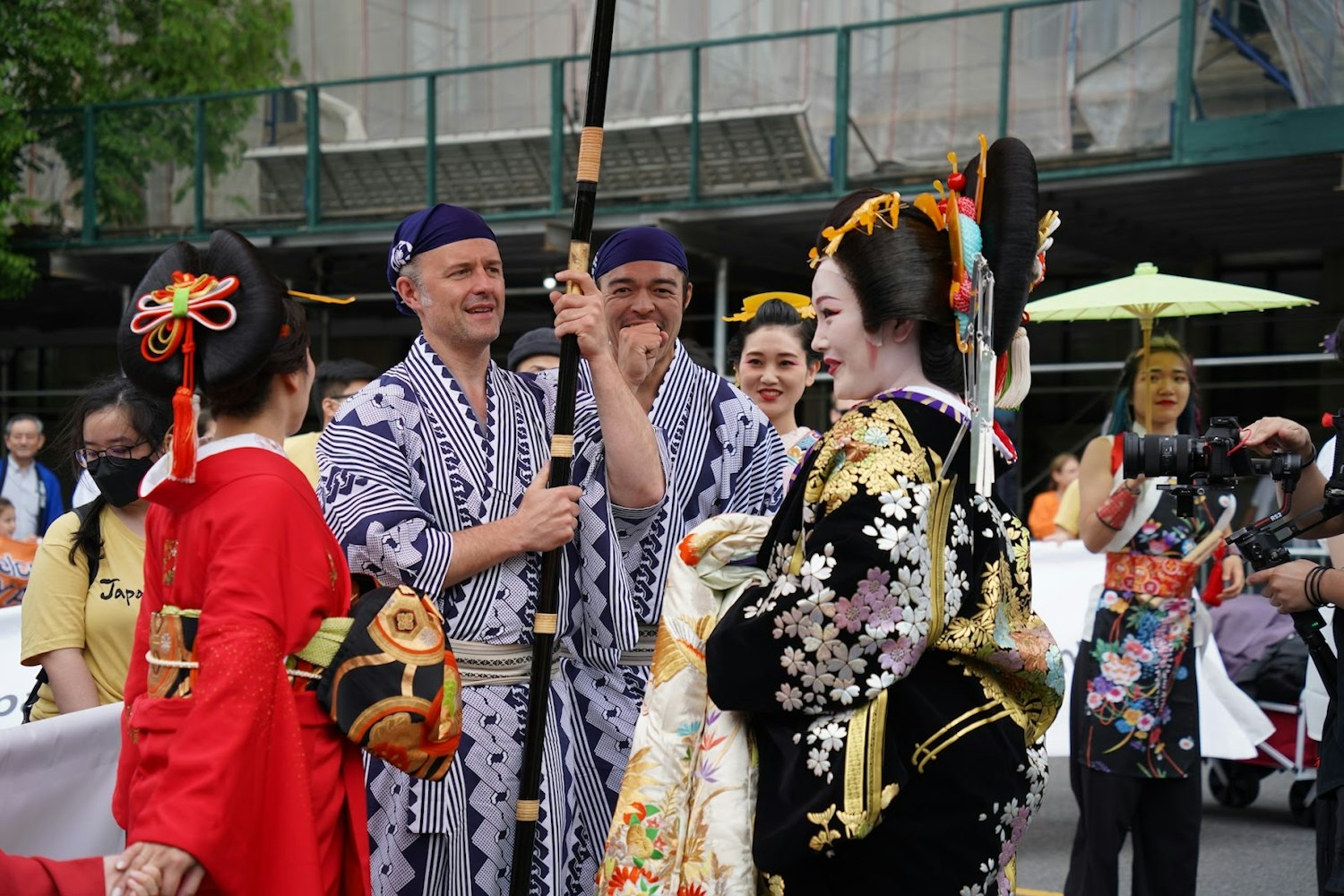
As they grow, under the watchful eyes of a mentor known as 'oneesan' (older sister), they polish their skills and gradually transition from Maiko to Geiko, the Kyoto dialect term for Geisha. The process typically lasts about five years, but the timeline can vary depending on the individual's mastery over the required skills. It's a transformative journey, symbolizing the maturation of a young apprentice into a fully-fledged artist, marking an important milestone in a Geisha's career.
A striking feature that sets Geiko and Maiko apart is their distinctive attire and hairstyles. A Maiko's attire is flamboyant, with a brightly colored kimono adorned with large, eye-catching obi (a wide belt), and they wear okobo, high wooden clogs. Their hair, styled in complex traditional arrangements, is adorned with an array of hairpins and floral accessories, reflecting the seasons and the Maiko's stage of apprenticeship.
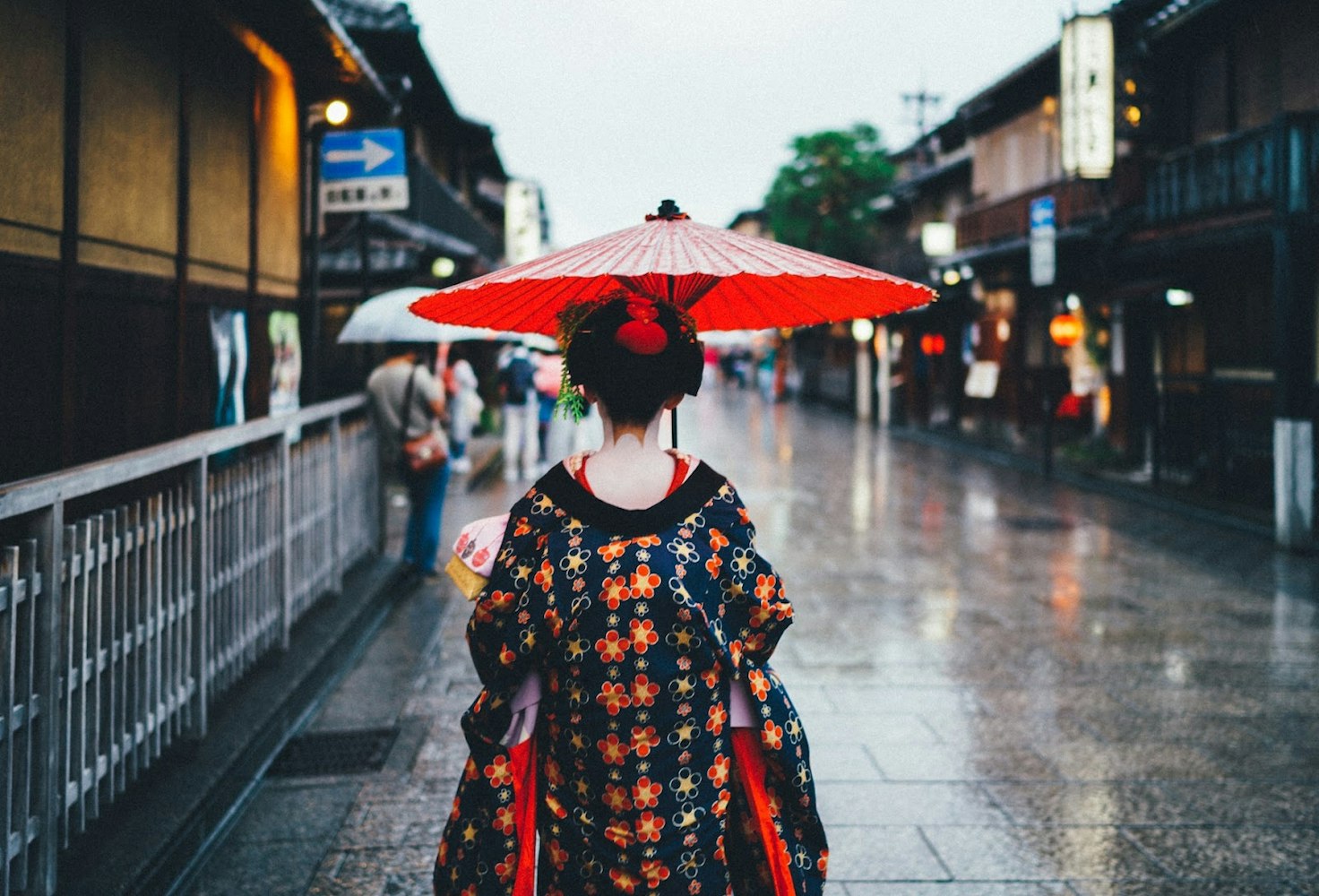
In contrast, the attire of a Geiko is more subtle and understated, reflecting their maturity and status. They wear simpler kimonos in muted colors, with a shorter obi tied in a square knot. Rather than the complex hairstyles of Maiko, Geiko typically wears wigs styled in simpler forms. These visual differences are more than just aesthetic variations; they symbolize the journey of a Geisha, from a young apprentice learning her craft to a mature artist who has mastered her art.
The path that leads to becoming a Geisha is marked by rigorous training and immense dedication. For a young girl embarking on the journey to become a Maiko, or apprentice Geisha, the training is as demanding as it is transformative. The young Maiko leaves behind her home, moving into an 'okiya', a Geisha house, where she is immersed in learning and embodying the cultural and artistic traditions that define a Geisha.
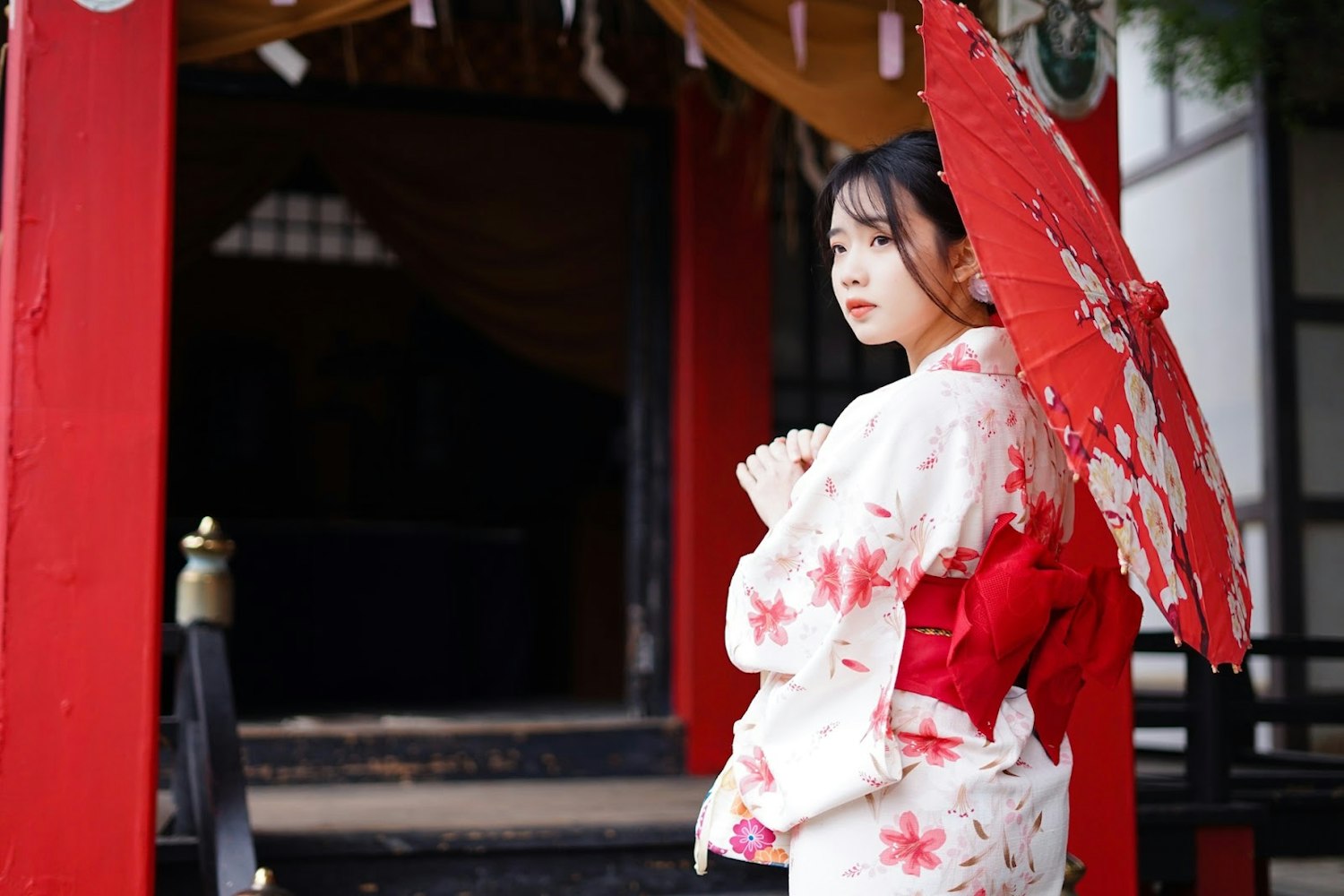
The first year, also known as 'Shikomi', is particularly intensive. The apprentice is expected to carry out household chores while observing and learning from the Geiko and senior Maiko in the house. This period is followed by 'Minarai', a phase where the Maiko accompanies a senior Geisha to engagements, learning by observation. Through these stages, the trainee not only refines her artistic skills but also acquires the grace, etiquette, and conversational prowess that define a Geisha's social interactions.
A crucial part of a Geisha's training revolves around mastering traditional Japanese arts. These art forms serve as the backbone of their performances and engagements. The training encompasses a variety of disciplines, each requiring a high level of proficiency. The Geisha are trained in traditional Japanese dance, learning to tell stories through graceful movements and expressions. They learn to play the shamisen, a three-stringed instrument that often accompanies their dances.
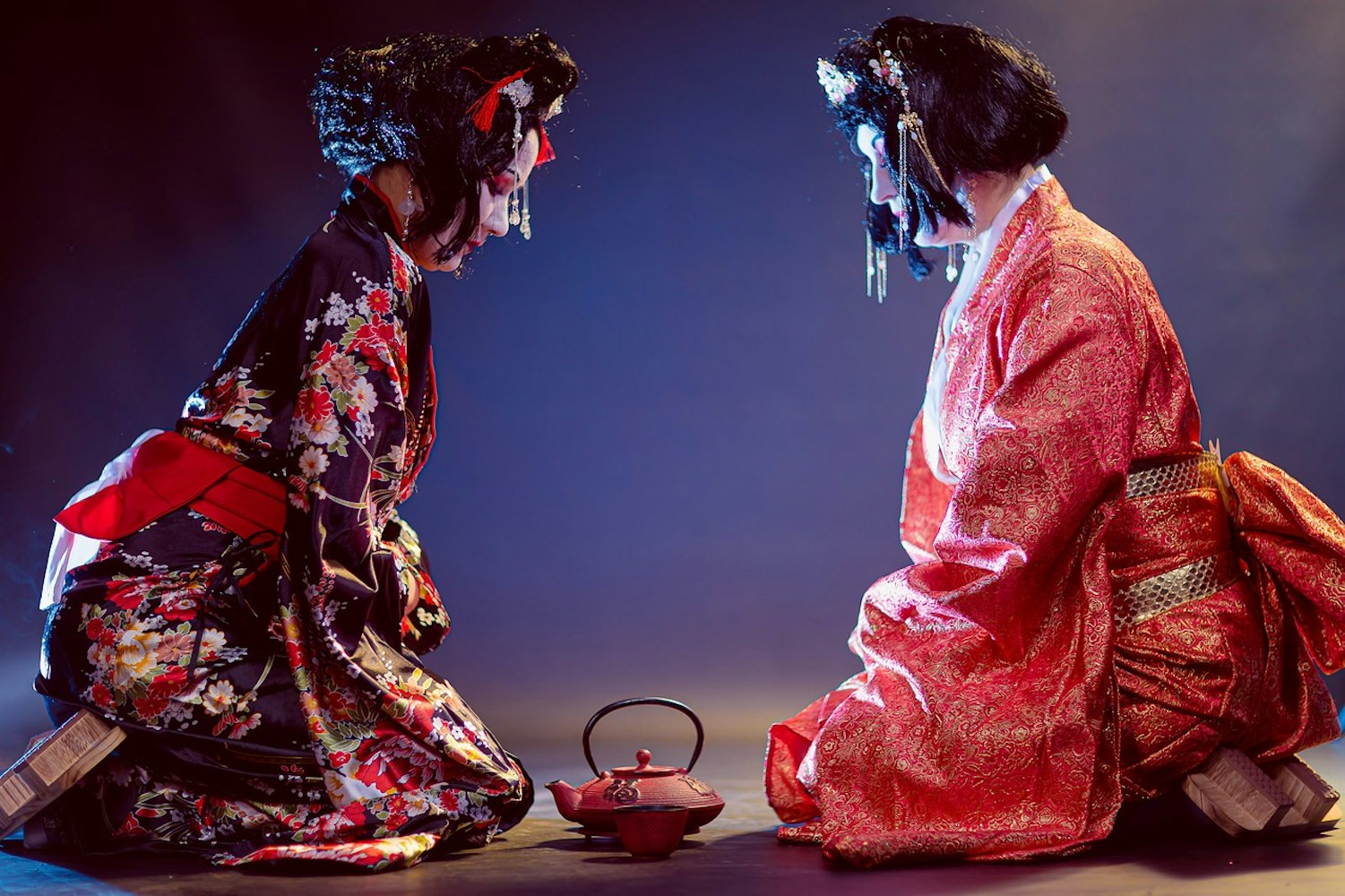
Tea ceremony, an art form steeped in spirituality and aesthetics, is another essential part of their training. It embodies the concepts of 'ichigo ichie' (one time, one meeting), signifying the unique value of each encounter. Beyond these, they are also trained in traditional games, flower arrangement (ikebana), and calligraphy, each skill contributing to their artistry and versatility. Through mastering these arts, a Geisha cultivates her ability to provide a refined and unforgettable experience for her guests.
In a rapidly modernizing world, the role of the Geisha has seen significant changes. While they continue to symbolize the elegance and grace of traditional Japanese culture, their presence and roles within society have evolved. Today, the Geisha is no longer confined to traditional teahouses and private parties. They have increasingly visible roles in public events, festivals, and cultural performances, bringing their art to a broader audience.
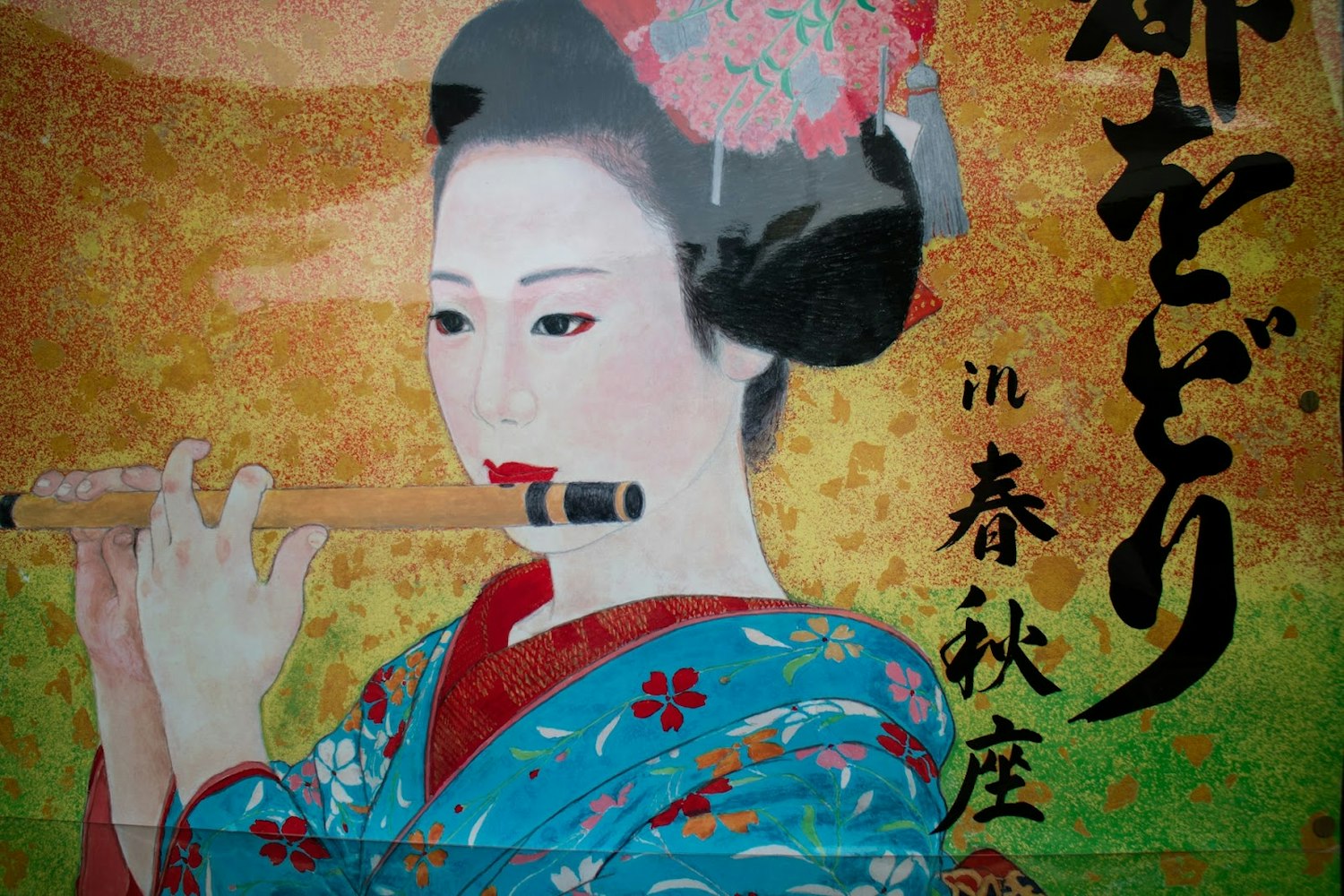
Moreover, as women's roles in Japanese society have evolved, so have the Geisha's. Today's Geisha are more autonomous, often managing their own bookings and clientele, showcasing their entrepreneurial spirit. Some even use social media platforms to share their art and culture with the global community, navigating a delicate balance between tradition and modernity. Despite these changes, they remain committed to their craft, embodying the timeless grace and artistry that define their profession.
Even as their roles have adapted to the changing times, the cultural significance of the Geisha remains profound. They stand as custodians of traditional Japanese arts, preserving a rich cultural heritage in an era of rapid modernization. Through their performances, they keep alive centuries-old music, dances, and customs, ensuring that these traditions continue to inspire future generations.
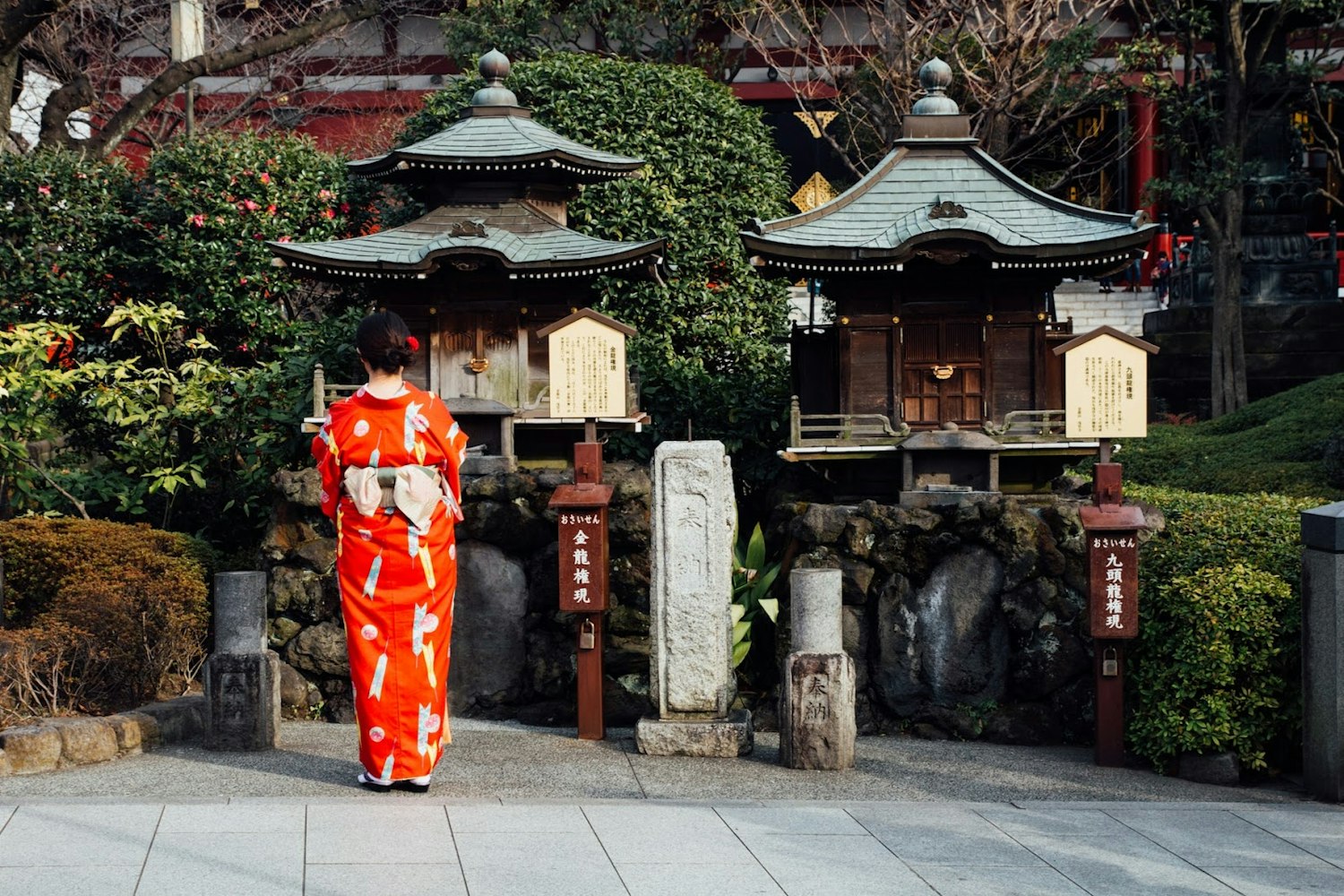
Furthermore, the Geisha's enduring relevance is a testament to Japan's ability to uphold its cultural identity amidst global influences. Their presence adds a unique charm to the Japanese cultural landscape, serving as a reminder of the country's historical past and cultural richness. In many ways, the Geisha continue to be cultural ambassadors, showcasing Japan's artistic traditions to the world, and ensuring that these art forms live on in the contemporary era.
While the Gion district offers a fascinating glimpse into traditional Japan all year round, certain times are particularly magical. The district springs to life in the early evening, as lanterns illuminate the streets, and geisha and maiko make their way to appointments at teahouses and restaurants. This is perhaps the best time to visit if you hope to catch a glimpse of these elusive artists in their stunning traditional attire. The soft light and the soothing sound of traditional music drifting from teahouses make for a memorable exploration of Gion's charming alleys.
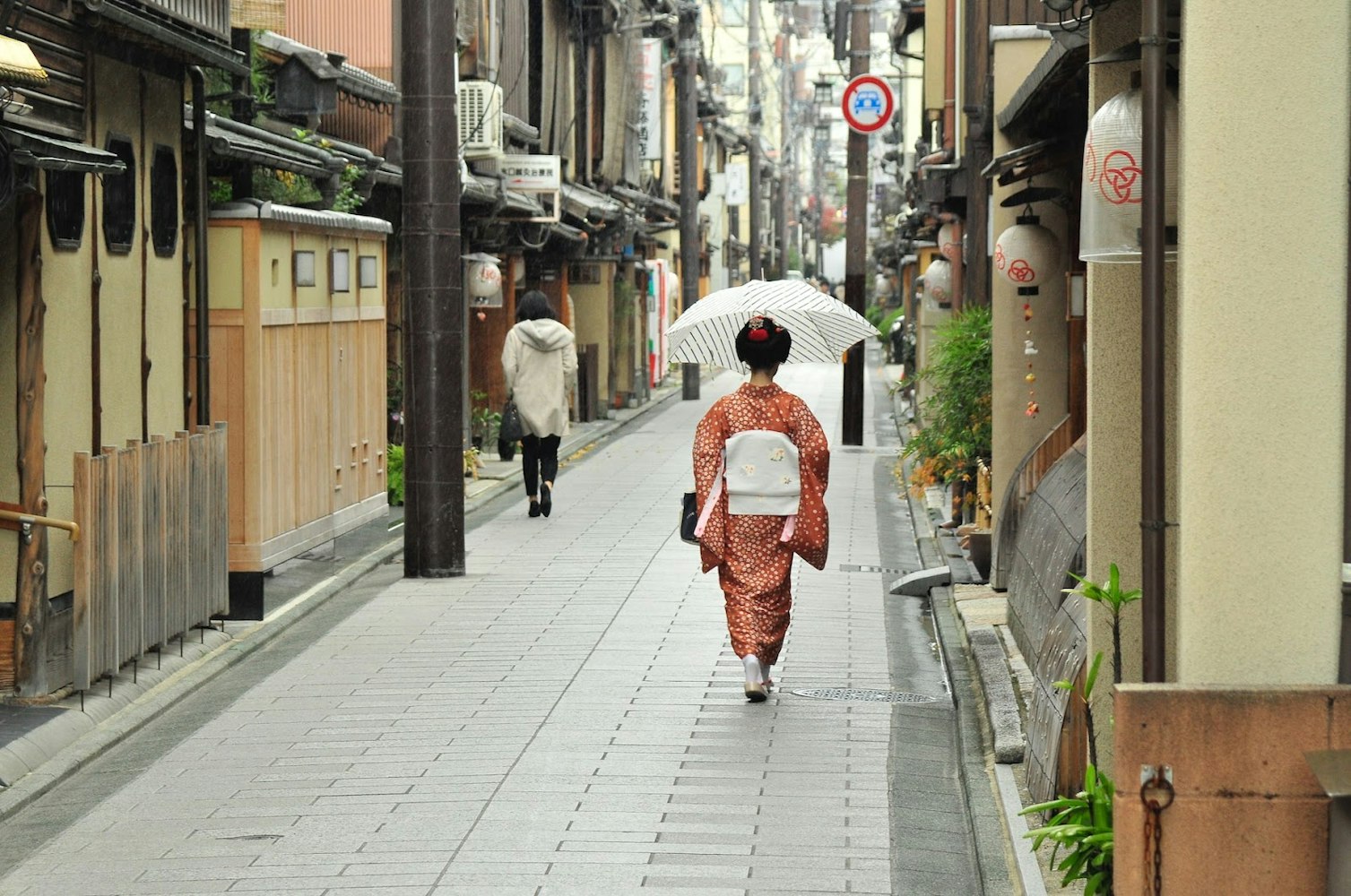
The district also puts on its best face during certain seasons. In April, cherry blossom season paints Gion in soft pink hues, making it the perfect time for a leisurely stroll along the canal lined with sakura trees. Likewise, autumn, around November, transforms the district into a riot of vibrant reds and oranges, providing a breathtaking backdrop for traditional architecture. Moreover, the annual Gion Matsuri Festival in July is another great time to visit, offering a chance to see grand processions, traditional performances, and festive celebrations. Each season in Gion brings its own charm, adding to the timeless appeal of this historic district.
Visiting Gion isn't merely a touristic endeavor; it's an immersive cultural experience. Every corner of this historical district whispers tales of an enduring past, allowing you to journey through time and explore the beautifully nuanced world of the Geisha. Even as the world races ahead, the Gion district and its Geisha stand as profound reminders of the depth and charm of Japan's heritage, serving as living symbols of a culture that continues to resonate and captivate.
Your encounter with Gion and its Geisha isn't an episode that concludes with your trip. Rather, it's a narrative that lingers, leaving you with a deeper understanding and appreciation of a unique cultural facet. The district, with its timeless appeal, and the Geisha, with their sublime artistry, together weave a compelling story that remains etched in memory, long after the journey has ended. So, whether you're a first-time visitor or a returning explorer, Kyoto's Gion district is a chapter in your travels that you will revisit, time and time again.
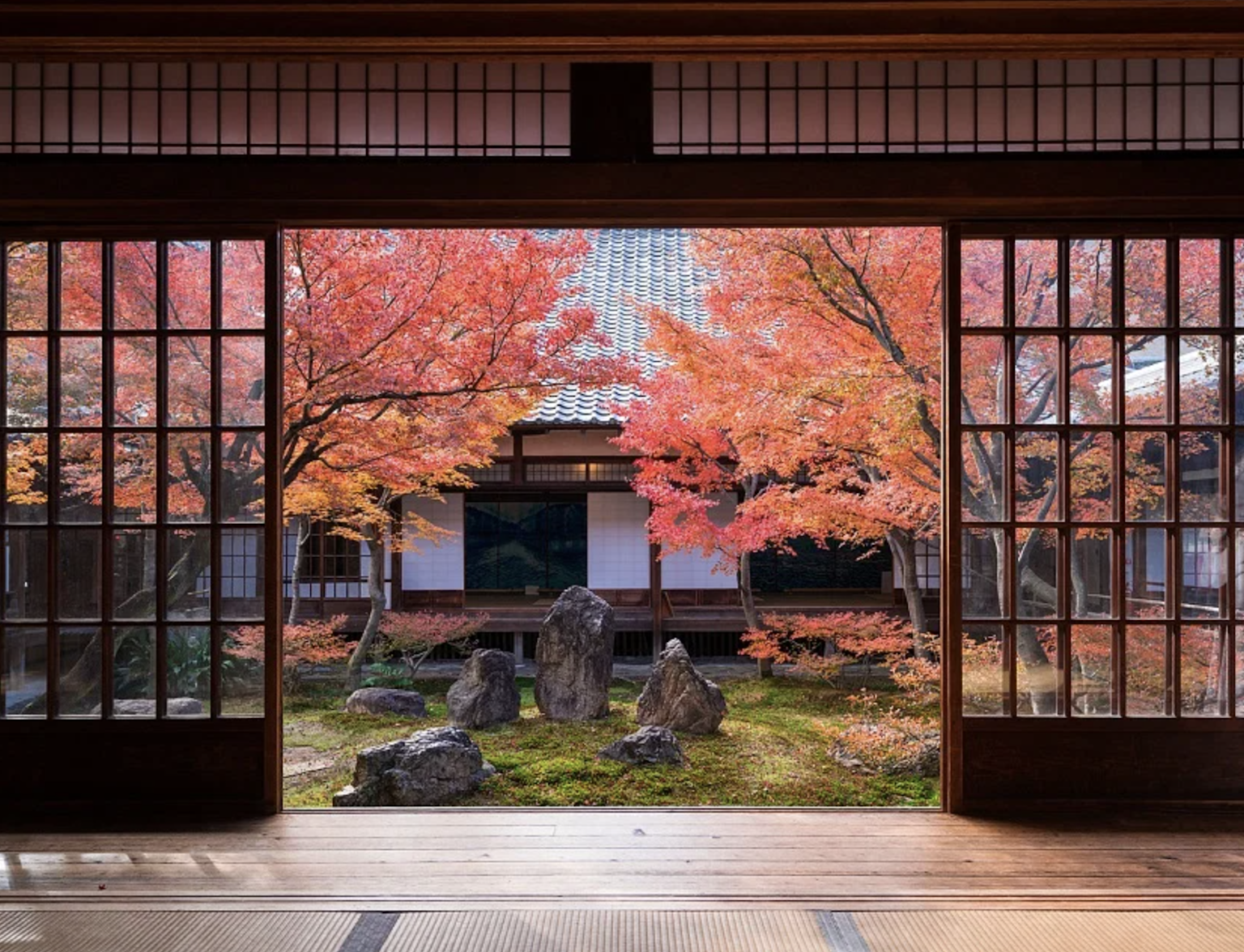
Step into Kyoto's enchanting geisha world, where ancient traditions and modern allure collide.
